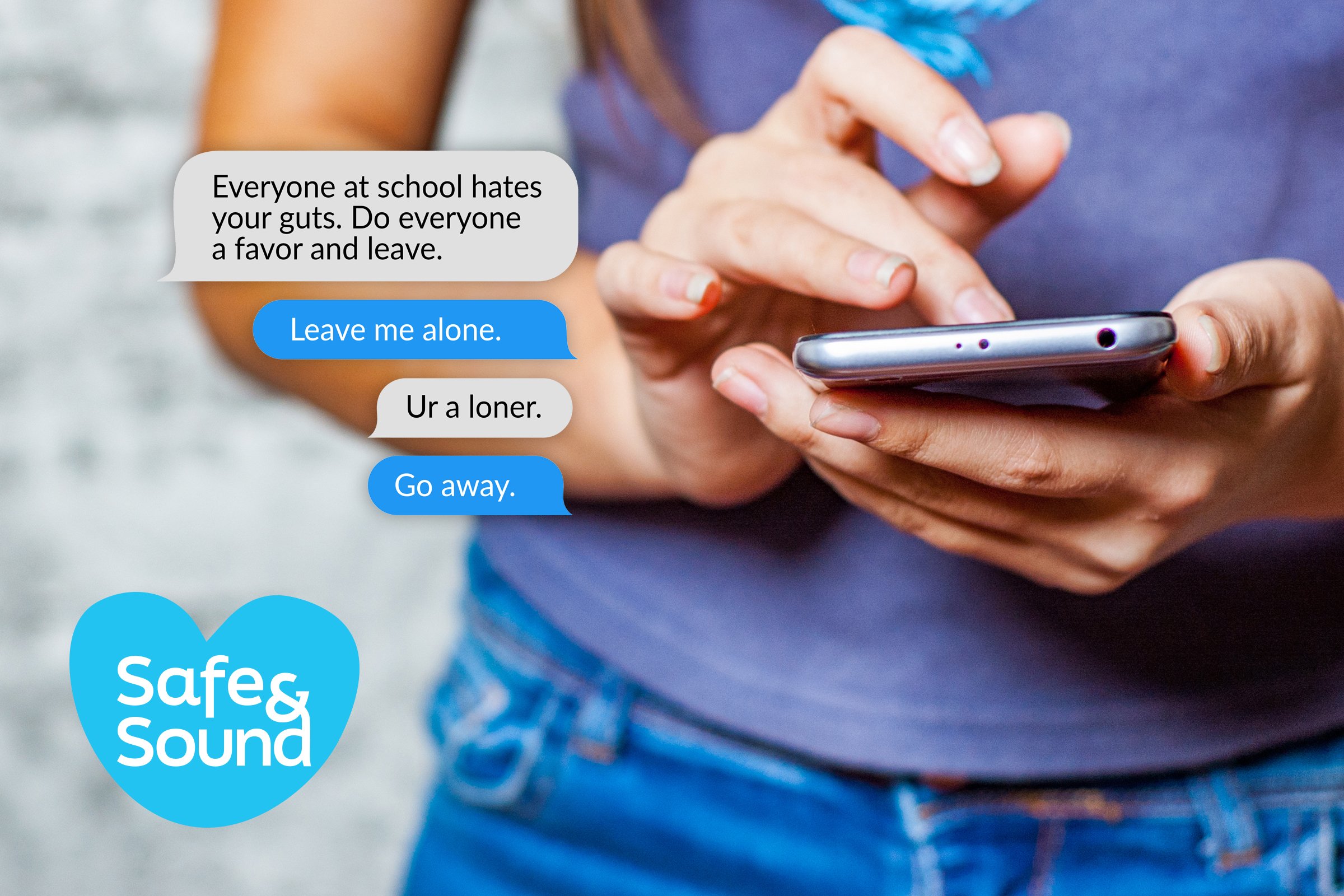Day 6: Cyberbullying
Safe & Sound is a free 21-day program to help parents, grandparents and caregivers protect children from abuse. Developed by Oregon Child Advocacy Centers, this Safe & Sound program for Central Oregon is brought to you by KIDS Center in collaboration with Protect Our Children.
Welcome to Day 6!
We’re starting Week 2 of our three-week Safe & Sound program. This week we’re focusing on internet safety. We’re going to cover five key areas of the internet that can put your child at risk, and give you clear tools to protect your kid, no matter their age.
We’re talking about cyberbullying.
What is Cyberbullying?
Bullying used to happen in school hallways, bathrooms, or on the playground. Now, thanks to cell phones, bullying has entered the digital realm. And that means cyberbullying can happen anywhere: at the dinner table, in a child’s bedroom, in the car, or any other place your child has a device and is actively engaging with the internet.
When you’re talking to your kid about cyberbullying, the easiest definition is “bullying that takes place over digital devices.” But there are some additional aspects of cyberbullying that you should know.
There’s more to cyberbullying.
It’s persistent and ongoing. Unfortunately, a one-off situation does not constitute cyberbullying. By definition, bullying involves continued harassment.
It can spread, and it can be permanent. Posts or comments can quickly spread via sharing or be amplified by algorithms. Depending on the platform used, some posts can live forever on the internet.
It can take many forms. Types of bullying or harassment include:
Pretending to be someone else
Excluding someone from a group for no good reason
Sharing someone’s personal information
Posting rumors, information, or pictures meant to embarrass
Forwarding text or pictures meant to be private
It’s difficult for adults to catch. Cyberbullying happens across multiple platforms, including social media platforms, messaging apps, direct messaging functions, online forums, email, and online gaming communities. Today’s kids tend to have conversations online through their devices. The distance created by the screen can embolden kids to harass others. Kids need to be aware of how their actions online can affect others.
It’s the sign of an unhealthy relationship. On Day 4 of Safe & Sound, we talked about characteristics of healthy and unhealthy relationships. Cyberbullying is full of unhealthy red flags. A cyberbully can deal in betrayal, volatility, belittling, sabotage, and isolation.
How to fight cyberbullying.
There are ways to combat cyberbullying. Having conversations with your child now can help curb the effect cyberbullying has on them later. It all boils down to three steps: Block, Report, and Ignore.
Block anyone that is cyberbullying. Report the instance to the platform/app it is happening on. Ignore and don’t respond to any posts. Ignoring online harassment is also the recommended course for anyone who sees it happening. When your child responds to a cyberbullying post, even if it’s to say, “That’s not true,” it ends up spreading that post further. If your child does see cyberbullying happening, encourage them to reach out to the person who is being bullied. Let that person know that not everyone is against them.
Be the parent or caregiver that is open to talking about tough topics. If your child has a question or is facing a difficult issue and you don’t know the answer, be willing to say so—and then follow through and find out the answer with your child. Show your child that they are not alone.
Today’s Conversation Starters
Young Kids (0-4): Here is where you focus and encourage foundations for healthy relationships. Because young kids don’t often have access to and the ability to engage or be a target of cyberbullying, we can focus on developing the habits and characteristics of healthy relationships.
Elementary-School Aged Kids: Build knowledge by asking them to define the action of cyberbullying
Conversation Starters
How would you describe cyberbullying?
Do you think cyberbullying is the same as bullying? If it is different, how does it differ?
Tweens and Teens: Begin to help them to think critically about this topic
Conversation Starters
Why do you think people cyberbully?
How does cyberbullying affect what happens at school?
What do you think you could do if you see cyberbullying happening online?
That’s it for Day 7! See you tomorrow!
More ways to participate in Safe & Sound:
Visit the 2024 Safe & Sound page and catch up on daily activities.





